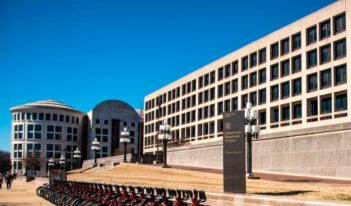
Retirement policy must evolve to account for participant preferences.
In December 2022, the U.S. Department of Labor adopted a rule entitled “Prudence and Loyalty in Selecting Plan Investments and Exercising Shareholder Rights.”
This rule retains the core principle underlying the Employee Retirement Income Security Act (ERISA) that the “duties of prudence and loyalty require retirement plan fiduciaries to focus on relevant risk-return factors.” In some circumstances, these factors may include the economic effects of climate change and other environmental, social, or governance factors. The rule does not require the consideration of these factors and fiduciaries may not subordinate the interests of participants and beneficiaries to objectives unrelated to the provision of benefits under the plan.
In March 2023, both the House and the Senate voted to nullify the rule. President Biden then used his first veto to preserve the rule. Meanwhile, attorneys general from twenty-five states are pursuing litigation to seeking to set aside the 2022 rule.
The intense political debate over the interpretation of ERISA’s fiduciary provisions reflects, at least in part, the importance of these fiduciary provisions in the current regulatory regime for employer-sponsored retirement plans. Although the trust-based fiduciary regime is now a centerpiece of retirement plan governance under ERISA, this was not always the case.
The development and drafting of ERISA predate the rise of 401(k) plans. In the 1960s and 1970s, defined benefit pension plans were the norm. Employers typically promised monthly pension checks for retired employees. In such arrangements, employers bore the risk and responsibility of setting aside and managing the money to pay for the pension benefits.
In 1974, when ERISA’s drafters borrowed the fiduciary provisions from donative trust law, they did so for the narrow purpose of curbing looting and asset mismanagement by insiders with access to pension funds. The fiduciary provisions were “stapled on” as just one piece of ERISA’s protective regime. Congress also imposed extensive vesting, funding, and insurance requirements to govern employer conduct in the administration of defined benefit pension plans.
In the ensuing decades, as defined contribution plans began to replace defined benefit plans in the private sector, many of ERISA’s rules—particularly those related to funding and insurance—ceased to apply. At the same time, defined contribution plans shifted the investment risk onto individual employees, whose retirement savings became directly affected by their employers’ decisions about plan administration and investment menu construction. With the shift to defined contribution plans, the trust-based fiduciary regime took on an increasingly prominent role in regulating the provision of retirement benefits.
Observers have noted that reliance on the trust-based fiduciary regime presents several challenges in the context of the modern 401(k) plan. The traditional donative trust settlor, trustee, and beneficiary roles do not neatly fit modern defined contribution pension arrangements. Instead, both employers and employees take on elements of each role. For example, although the drafters of ERISA analogized defined benefit plan participants to trust beneficiaries, individual participants in 401(k) plans have considerable discretion about whether to participate in their employer’s plan, how much of their salaries to contribute, and which investments to select from the menus curated by their employers.
In recent years, the Labor Department has begun to consider the role of participant preferences in the selection of investment options for employer-sponsored 401(k) plans. In the preamble to a rule issued in 2020 on “Financial Factors in Selecting Plan Investments,” the Labor Department stated that “nothing in the final rule precludes a fiduciary from looking into certain types of investment alternatives in light of participant demand for those types of investments.”
The preamble to the 2022 rule states that “if accommodating participants’ preferences will lead to greater participation and higher deferral rates, then it could lead to greater retirement security.” Accordingly, the 2022 rule provides that in a participant-directed individual account plan, a fiduciary “does not violate the duty of loyalty … solely because the fiduciary takes into account participants’ preferences in a manner consistent” with the duty of prudence. The 2022 rule does not mandate that fiduciaries factor participants’ preferences into their decision-making nor does it impose a uniform methodology for determining such preferences.
The Labor Department’s approach to the methodology for determining participant preferences likely reflects the absence of established institutional processes to facilitate direct engagement with plan participants. Despite the dramatic changes to the nature of retirement benefits, retirement plan governance today does not look dramatically different than it did in the heyday of defined benefit plans. When employers bore the investment risk and responsibility, there was little reason to consider participants’ preferences with respect to particular investments. The shifting of investment risk onto individual plan participants in 401(k) plans strengthens the case for such consideration as part of a fiduciary decision-making process that satisfies ERISA’s prudence and loyalty requirements.
Although the 2022 rule permits—but does not require—engagement with participant preferences, plan sponsors are likely to face increased pressure for some form of engagement from Millennial and Generation Z workers. Plan sponsors may also receive requests from their own shareholders, who have begun to submit shareholder proposals asking corporate boards to assess, for example, how retirement plan investment options align with the companies’ climate action goals. Beyond the employee benefits context, there is also a broader debate about the role of investor preferences in decision-making by institutional asset managers.
In the nearly five decades after the passage of ERISA, the United States has seen dramatic changes in how workers save for retirement and in the allocation of risk between employers and employees. In that time, ERISA’s prudence and loyalty standards have become a central feature of the regulatory regime governing employer-sponsored retirement plans. As the regulatory regime continues to evolve, ERISA’s once obscure fiduciary provisions are likely to remain in the limelight for the foreseeable future.
This essay is part of a five-part series entitled, ESG and Retirement Plan Investing.




